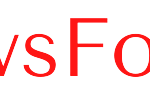The Federal government has warned Nigerians not to mix one brand of COVID-19 vaccine with another brand in first and second dose.
Speaking through the Executive Director of National Primary Health Care Development Agency (NPHCDA), Dr. Faisal Shuaib added that, those who have received AstraZeneca as first dose should receive AstraZeneca as second dose, while those who will receive Moderna as first dose will receive Moderna as second dose when due.
He made this known while briefing newsmen on the progress of COVID-19 vaccination in Nigeria, saying, in a few days, we will take delivery of additional AstraZeneca vaccine and those who are due for second dose of the vaccine will be prioritized.
He stated that ,most brands of COVID-19 vaccine require two doses of varying intervals between the doses for full protection. Moderna is two doses, four weeks apart; Oxford AstraZeneca is two doses with six to 12 weeks apart; and Pfizer is two doses, three weeks apart.
However, brands such as Johnson and Johnson that we are receiving tomorrow, require a single dose for full protection against the virus. The initial dose that we will be receiving will be focused on those who are in the hard-to-reach areas (riverine areas, desert areas) and the elderly because they are people who may find it difficult to leave their homes to the health facility for a 2nd dose vaccine.
He alsourged Nigerians to ensure they complete their doses for full protection.
He added that, as you are aware, we have received 4,000,080 doses of Moderna COVID-19 vaccine donated by the government of the United States, and we will be receiving 176,000 doses of Johnson & Johnson vaccines tomorrow Wednesday August 11th. These 176,000 doses as you are aware, are coming out of the 29,850,000 doses that the Federal Government procured from the AFREXIM Bank through the African Union.
Meanwhile , the WHO Country Representative, Dr Walter Kazadi Mulombo said that the current data currently available in WHO Africa Region show that: Weekly COVID-19 deaths in Africa reached a record peak in the week to 1 August, marking the highest seven-day toll since the onset of the pandemic in the continent. Africa is still in the throes of its third wave, recording more cases than any earlier peak.
He further stated that, Africa’s third wave is not over.We must all double down on prevention measures to build on the fragile gains achieved in Nigeria amid the country’s low vaccination rate: less than 2% of the entire population is fully vaccinated.
He also urged that, “We must be mindful of discontinuing public health and social measures such as maintaining physical distance, avoiding crowded places and always observing hand hygiene. Relaxing them too early could see us losing some of the gains that vaccines have enabled us to make
To boost the uptake of vaccines, government, traditional and religious institutions as well as community influencers need to scale up operations, investments on operational costs and step up sensitization efforts to address vaccine hesitancy.
“Also, as the country anticipates utilization of multiple vaccine types, it is important that we set up strategies that will ensure doses are efficiently administered. Rollout plans will aim for a high uptake in priority population groups and provide equitable access to achieve significant vaccination coverage
“Lessons from countries that already have multiple vaccines
There is uneven readiness among countries, to receive multiple vaccines, however, some countries have already received multiple vaccines and have some insights into how they administered them:
Rollout vaccines that have shorter shelf-life first; Rollout Pfizer/Moderna in capital city where there is ultra-cold chain storage and other vaccines that can last longer in fridges, in districts; Collaborate with private sector to enhance rollout; Use Janssen/Johnson & Johnson (one dose) for hard-to-reach populations in districts and two-dose vaccines in fixed sites in centre.”
He restate that, WHO will continue to support government to implement measures that will maximize the impact of the second phase of COVID-19 vaccination, including simplifying the rollout at local levels as well as minimizing wastage.

